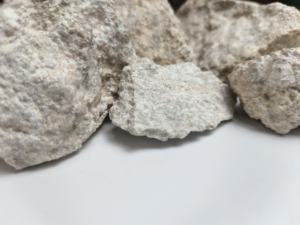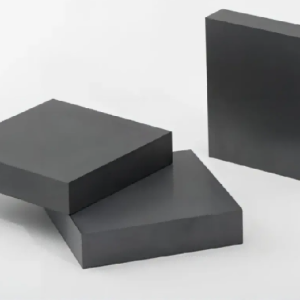Discover Premium Ceramic Products | Durability & Elegance United | Advanced Ceramics
1. Introduction
In the past 48 hours, a surge in industrial demand for high-performance refractory materials has spotlighted silicon carbide crucibles, especially as global foundries ramp up production amid supply chain shifts in rare-earth metals. With their exceptional thermal conductivity and resistance to thermal shock, silicon carbide crucibles are becoming the go-to choice for metal melting, glass processing, and even advanced ceramics manufacturing.

But despite their durability, improper handling can lead to premature failure. Whether you’re a hobbyist metal caster or a lab technician, this guide will show you exactly how to use and care for your silicon carbide crucible—plus clarify how it stacks up against alternatives like boron carbide and silicon nitride.
2. What Is a Silicon Carbide Crucible?
A silicon carbide crucible is a high-temperature container made from silicon carbide (SiC), a compound known for its extreme hardness, thermal stability, and chemical inertness. Unlike traditional clay-graphite crucibles, silicon carbide crucibles can withstand temperatures up to 1,600°C (2,912°F) without degrading.
These crucibles are widely used in foundries, laboratories, and even artisanal metalworking. They’re also the foundation for other high-performance components like silicon carbide ceramic tiles, silicon carbide burner nozzles, and silicon carbide tubes for furnace applications.
3. Step-by-Step Guide to Using a Silicon Carbide Crucible
3.1 Pre-Use Preparation
Before first use, inspect your silicon carbide crucible for cracks or chips. Even minor damage can cause catastrophic failure under heat. Never use a damaged crucible.
- Clean the interior with a soft brush to remove any dust or debris.
- Perform a gradual pre-firing (also called seasoning): Heat the empty crucible slowly to 600–800°C over 1–2 hours, then let it cool naturally. This removes residual moisture and stabilizes the structure.
3.2 Loading and Melting
When loading metal or material:
- Avoid overfilling—keep contents below 80% capacity to prevent spillage during thermal expansion.
- Use clean, dry charge material to minimize chemical reactions that could erode the crucible lining.
- Heat gradually. Rapid temperature changes are the #1 cause of thermal shock, even in robust silicon carbide.

3.3 Handling During Use
- Always use proper tongs designed for high-temp crucibles.
- Never place a hot crucible on a cold or wet surface—it can crack instantly.
- Avoid direct contact with water or coolants while hot.
4. Common Problems and Solutions
4.1 Cracking or Spalling
Cause: Thermal shock from rapid heating/cooling or mechanical impact.
Solution: Always ramp temperature slowly (≤200°C per hour during initial heat-up) and allow natural cooling inside the furnace when possible.
4.2 Glaze Buildup or Slag Adhesion
Cause: Reactive melts (e.g., aluminum with impurities) bonding to the crucible wall.
Solution: Apply a compatible release coating before use, or gently chip off cooled slag with a wooden or plastic tool—never metal.
4.3 Reduced Lifespan
Cause: Using the crucible beyond its temperature rating or with incompatible materials (e.g., strong alkalis).

Solution: Match your process to the crucible’s specs. Silicon carbide performs best with non-ferrous metals like copper, brass, and aluminum—not with highly corrosive slags.
5. Silicon Carbide vs. Alternatives
You might wonder: Should I use boron carbide vs silicon carbide? Or consider a silicon nitride crucible?
Boron carbide is harder but more expensive and less thermally conductive—better for armor, not melting. Silicon nitride, while excellent for thermal shock resistance, is typically used in specialized applications like custom silicon nitride heat shields or silicon nitride ceramic plates in aerospace.
For most industrial and hobbyist melting tasks, silicon carbide offers the best balance of cost, durability, and performance. That’s why you’ll also find silicon carbide in rbsic silicon carbide tile blocks, silicon carbide ceramic columns, and even silicon carbide bricks for kiln linings.
6. Beyond Crucibles: The Versatility of Silicon Carbide Ceramics
Interestingly, the same material used in crucibles also appears in everyday items. High-end kitchenware like silicon carbide ceramic baking dishes, silicon carbide ceramic dinner plates, and silicon carbide ceramic serving bowls leverage SiC’s even heating and non-reactive surface.
Brands like Staub have explored silicon carbide baking dish staub lines for superior oven performance. You’ll also find silicon carbide ceramic ramekins, silicon carbide ceramic casserole dishes with lids, and even silicon carbide children’s plates—thanks to its non-toxic, lead-free composition.
In plumbing and engineering, silicon carbide ceramic pipes, silicon carbide tubes, and silicon carbide disc taps offer unmatched wear resistance. Silicon carbide grinding discs and silicon carbide sanding discs are standard in precision machining.
7. Maintenance and Storage Tips
- After use, let the crucible cool completely before cleaning.
- Store in a dry, room-temperature environment—moisture absorption can cause steam explosions during reheating.
- Stack carefully; avoid placing heavy objects on top.
8. Conclusion
A silicon carbide crucible is a powerful tool—but only if used correctly. By following these steps for pre-firing, controlled heating, gentle handling, and proper storage, you’ll extend its life significantly. And while alternatives like silicon nitride crucibles or boron carbide have niche uses, silicon carbide remains the gold standard for most high-temp applications, from foundries to fine ceramic dinnerware. Treat it with respect, and it’ll serve you reliably for dozens of melts.
Our Website founded on October 17, 2012, is a high-tech enterprise committed to the research and development, production, processing, sales and technical services of ceramic relative materials such as How. Our products includes but not limited to Boron Carbide Ceramic Products, Boron Nitride Ceramic Products, Silicon Carbide Ceramic Products, Silicon Nitride Ceramic Products, Zirconium Dioxide Ceramic Products, etc. If you are interested, please feel free to contact us.

